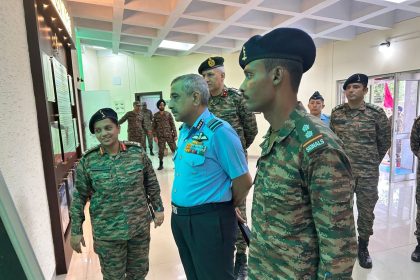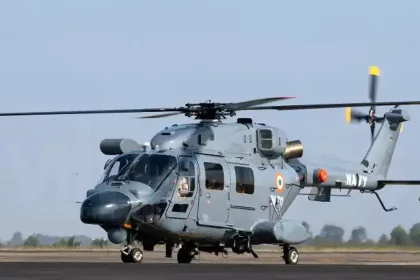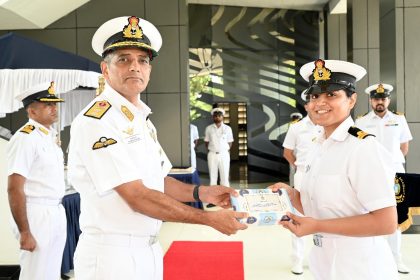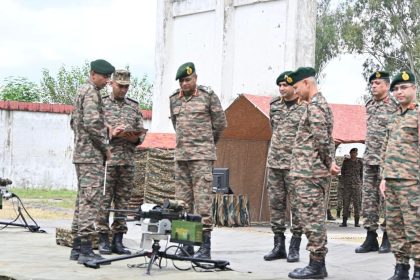Chief of Integrated Defence Staff Visits Forward Areas in Eastern Sector
Air Marshal Ashutosh Dixit reviews operational readiness at Bagdogra, stresses joint Army–Air Force synergy in Eastern Sector.
HAL Emphasises Maintenance After Army Orders Safety Check on ALH Fleet
Army orders fleet-wide checks after tail drive shaft defect; HAL stresses strict upkeep to ensure ALH Dhruv safety and airworthiness.
Indian Naval Academy Concludes SNOC Training for Medical Officers
Twelve officers, including women, complete six-week orientation to combine medical expertise with naval leadership at INA Ezhimala.
Army Chief Unveils Operation SINDOOR: The Untold Story of India’s Deep Strikes Inside Pakistan
Army Chief launches Lt Gen KJS Dhillon’s book revealing inside account of India’s bold four-day cross-border strikes in May 2025.
Lt Gen Dhiraj Seth Conducts Annual Administrative Inspection at College of Defence Management
Southern Army Commander reviews training, infrastructure, and curriculum integration at CDM Secunderabad.
Lt Gen Anindya Sengupta Reviews Homegrown Technologies at Golden Key Division
Indian Army Showcases Soldier-Led Innovations at Lucknow.






